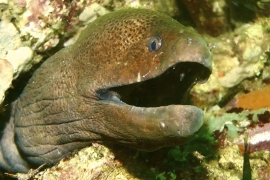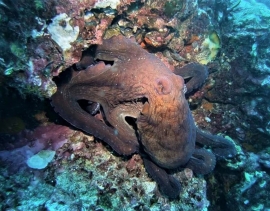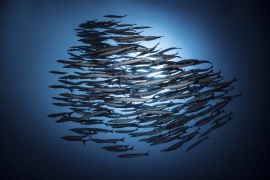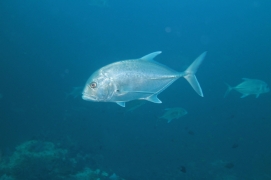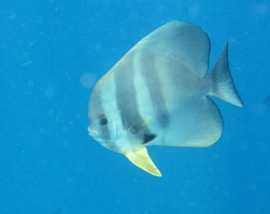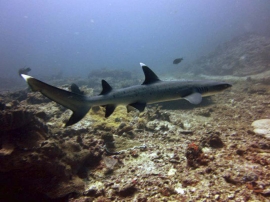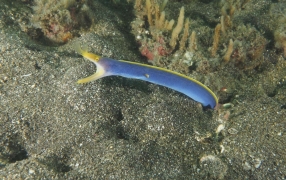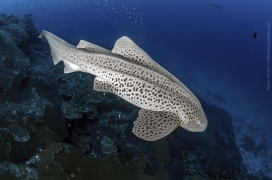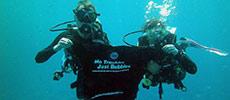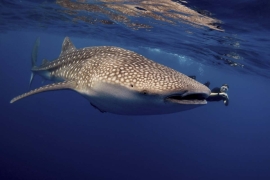
Thaa Atoll Liveaboard Diving
Thaa Atoll in the Maldives is officially known as Kolhumadulu, which is what the locals call it. The name 'THAA' actually comes from the code letters used for it, but Thaa is easier for foreigners to pronounce, and therefore that name stuck. This is the case for most Maldives atoll names. Thaa is a large natural atoll and second to southernmost of the atolls that make up the main archipelago. Laamu (Haddhunmathi) is its nearest neighbour to the south, then there is a large gap before Gaafu (Huvadhu) in the deep south. There are 66 islands, but only 13 are inhabited. As of early 2020, there is only one resort at Thaa Atoll and a few guesthouses, making it one of the least-developed of The Maldives' atolls. Its location isn't remote, but it is almost at the southern tip of the main group of atolls.
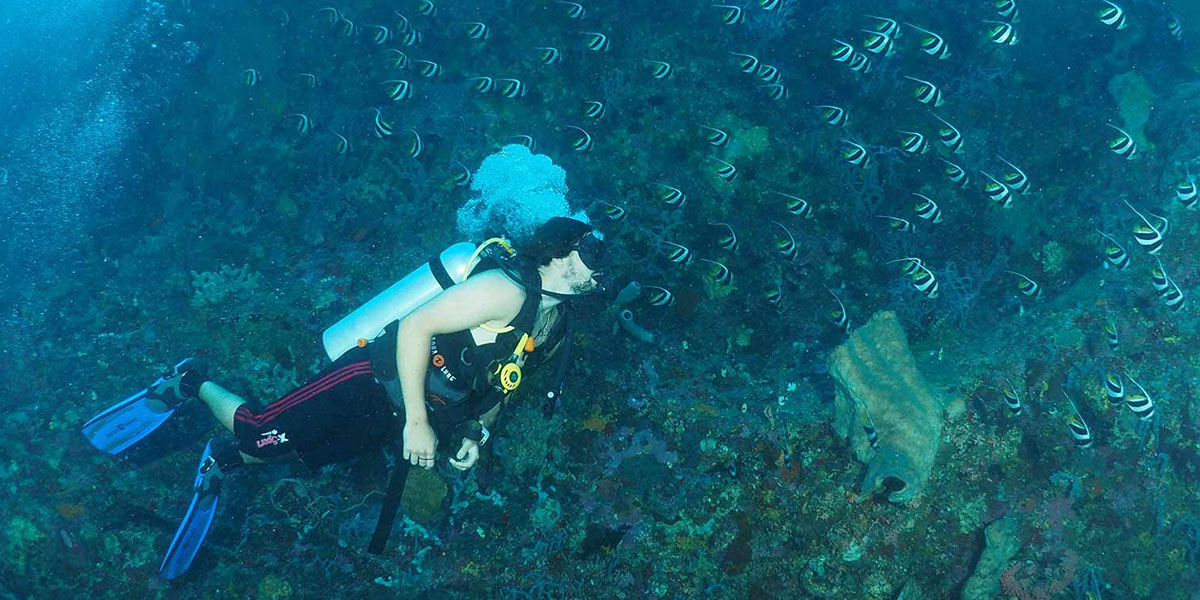
Almost circular in shape, Thaa Atoll is quite large and measures 53 kilometres across and 44 kilometres north to south. There are more than 25 dive sites, which are nearly all on the eastern side and more are being discovered all the time. Half are inside the lagoon and half outside. The sea conditions inside atolls' lagoons are much calmer, with plenty of colourful corals and resident reef fish. Thilas are underwater islands or submerged pinnacles, that almost reach the surface. The ones which peak nearest to the surface can be seen on our map as light-coloured spots. The better thilas for liveaboard diving in Thaa Atoll are on the eastern side of the lagoon, but not as easy to see from the satellite image. The dozen or so Thaa Atoll dive sites outside of the lagoon are at the channels (kandus) between the islands. The majority are on the eastern side, but there are a few on the north and south sides. Dive sites' names vary from one dive operator or language to another, and more are being explored every season.
Common names of Thaa Atoll dive sites are
Local names include Olhugiri Kandu, Fahala, Dhiffushi, Nasih, Thimarafushi, Maalifushi, Kolhufushi, Dhebadhi and many more.
Some of the dive sites are suitable for all levels of scuba diver, from beginner to professional. The majority require Advanced certification to be properly explored, and a few need you to be comfortable in a current. Visibility can be among the best in the country, and marine life is healthy, abundant and diverse. Getting there can be done by domestic flight from Male, but it's best to join a liveaboard diving safari. Most south-central liveaboard itineraries will start in Male and finish in Laamu, or the other way around.
Conditions at Thaa Atoll
When to dive at Thaa Atoll
You can dive at Thaa Atoll all year round, but the best months are during the dry season, known as the north-east monsoon. This is generally December to May. From January to March liveaboard safaris offer south-central cruises that often include Thaa Atoll.
What type of dive site is Thaa Atoll
There's a wide choice of dive sites at Tha Atoll. Most are reef dives, with very gentle, medium or strong currents. About half of the approximately thirty dive sites are inside the lagoon and the other half on the outer reefs and in the channels.
Where is Thaa Atoll?
Thaa is almost the southernmost atoll of the group of atolls that make up the main archipelago. Only Laamu Atoll is further south in the main group. It's considered to be part of the south-central atolls.
How to get to Thaa Atoll
The best way to visit Thaa Atoll for diving is by liveaboard safari. Most of the south-central trips will start in Male and finish in Laamu, or vice versa. Therefore, you will need a domestic between Laamu & Male.
Who can dive at Thaa Atoll
Anyone can dive at some of the dive sites, particularly those inside the lagoon. On the outer reef dive sites, it's usually necessary to be at least Open Water with Adventure Deep certification. For diving in the channels, you should have at least 50 logged dives, and some operators require more than that.
What marine life can you see at Thaa Atoll?
Lots of different species of marine life can be seen at Thaa Atoll. Some websites claim that Hammerhead Sharks are common and that Whale Sharks can be seen on night dives, but it's safe never to guarantee anything, and to enjoy each dive regardless of how big or special the fish you see are. Like most Maldives atolls, you can expect to see lots of small and colourful species within the lagoon, and there's more chance of large and pelagic species in the channels and at the deeper outer reef areas.
Summary of Thaa Atoll
Thaa Atoll is a large and mainly undeveloped atoll in the southern Maldives. Even today more dive sites are being discovered, in addition to the 25-30 which are already well known. Even in high season (January to March) your liveaboard diving boat will most likely be the only one at each dive site. Marine life is healthy, diverse and abundant. Dive sites inside the lagoon are generally easy and calm, but in the channels, the currents can be strong but attract large pelagic species.

